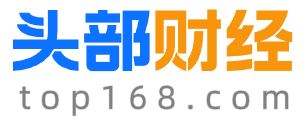
TMTPost -- Xiaomi Corporation is on track to launch a hypercar variant of its first electric vehicle (EV) model SU7 next year.

Credit:Xiaomi
The production version of SU7 Ultra will hit the market in the first half of 2025, said Xiaomi founder andCEOLei Jun in a live-stream event last week. The variant features the same chassis structure, triple motors, and battery pack as the prototype, and will be a little bit more expensive than the standard US7, but not particularly so, Lei said. Xiaomi originally planned to roll out SU7 Ultra together with SU7, but later dropped the program of the Ultra variant and then resumed it, according to Lei. “We thought that to do a good job on SU7is enough since we would not be able to do anything well if our work became too expensive, so we canceled it(SU7 Ultra). But later we felt that we would not showcase Xiaomi’s position if we did not work onUltra,”Lei said.
Lei’s remark came days after Xiaomi unveiled a prototype of SU7 Ultra. The variant can go 0-100 kilometer/hour (km/h), or 0-62 mph, in a scorching 1.97 seconds, and features a top speed of over 350 (217.48 mph), along with an acceleration from 0-100 km/h in 1.97 seconds (0-60 mph in around 1.9 seconds), and 1,548 horsepower. The production version will maintain most of the rest of its current tech, including three V8s electric motors and 800V architecture powered by CATL’s fast-charging Qilin II batteries that can recharge from 0-100% in twelve minutes.
Xiaomi said it will be attempting to record an outstanding lap time at Nürburgring Nordschleife circuit in October. The prototype of SU7 Ultra will chase world record of lap time for non-production versions at Nürburgring in October, aiming to become the fastest four-door electric car at the world famous track within ten years, Lei said.
Xiaomi officially launched SU7 on March 28, with starting price cheaper than its major competitor: Tesla’s affordable Model 3. CEO Leipresented that day SU7 has a layered pricing since it has three variants. The standard SU7 costsRMB215,900 (US$29,872), and the Pro and Max version arepriced at RMB245,900 and RMB299,000, respectively. Lei said the SU7 is RMB30,000 cheaper than Model 3, which starts at RMB245,900 in China.
Xiaomi started presalesfor SU7on the day of launch and offered a hand of freebies worth of up to RMB22,000, such as Nappa leather seats and a built-in fridge, to anyone who place the order of the Standard and the Pro version by April 30. The company disclosed at Chinese social media Weibo that it received more than 10,000 preorders in just four minutes since the launch, and preorders topped 50,000 within 27 minutes. These preorders come from customers who had paid a deposit of RMB5,000 that is refundable within seven days since the order is effective.
Xiaomi disclosed at the start of July that it achieved a new milestone of delivery: the delivery of in June for the first time exceeded the 10,000-unit mark in a month. Xiaomi added the shipment in July is expected to be more than 10,000 vehicles too. Xiaomi said its work to accelerate delivery of SU7 is well on the way as the facility has initiated two-shift production in June. Starting from July 1, the delivery of SU7 series will be further accelerated, and the delivery cycle is expected to be shortened by up to 5 weeks after the order is locked in, Xiaomi said. At the same time, the company will carry out a new round of production line optimization and maintenance in the near future to prepare for further improvement of production capacity.
During his annual speech on July 19, Lei said Xiaomi’s 100,000-unit annual delivery target of SU7 is expected to be met in November, a month ahead of schedule. It is expected that Xiaomi will open 220 retail stores for its EV business in 59 cities across China in December, Lei added. Reviewing the history of Xiaomi auto business, Lei said it is the U.S. sanctions on Xiaomi’s mobile phone business in 2021 that forced the company to decide to build cars. The chief executive said he personally led a team to visit many automakers, interviewed more than 200 industry insiders, and held four executive meetings to discuss the feasibility. In the end, his comapny made the decision to foray into the automotive industry.
免责声明:本网信息来自于互联网,目的在于传递更多信息,并不代表本网赞同其观点。其内容真实性、完整性不作任何保证或承诺。由用户投稿,经过编辑审核收录,不代表头部财经观点和立场。
证券投资市场有风险,投资需谨慎!请勿添加文章的手机号码、公众号等信息,谨防上当受骗!如若本网有任何内容侵犯您的权益,请及时联系我们。
相关文章
-
多国语言网站建设
2024-08-064阅读
-
全民参与,网络安全从娃娃抓起!
2024-08-064阅读
-
网
2024-08-064阅读
-
硅谷危机:一夜之间26万岗位消失,科技巨头纷纷陷入裁员狂潮
2024-08-064阅读
-
场景实验室创始人吴声:联想进化40年,以CP理解PC
2024-08-064阅读
-
中国AI长卷(三):算法生根
2024-08-064阅读
-
16个月后,中国大模型的最佳实践是什么?
2024-08-064阅读
-
机械革命推出蛟龙 15 Pro 笔记本:R7-7435H+RTX4060,5499 元起
2024-08-054阅读
-
惠普战 99 商用一体机配置上新:i5-14500 + 1TB 售 4899 元起
2024-08-054阅读
-
11连板大牛股,业绩出炉!公司提示风险
2024-08-054阅读

